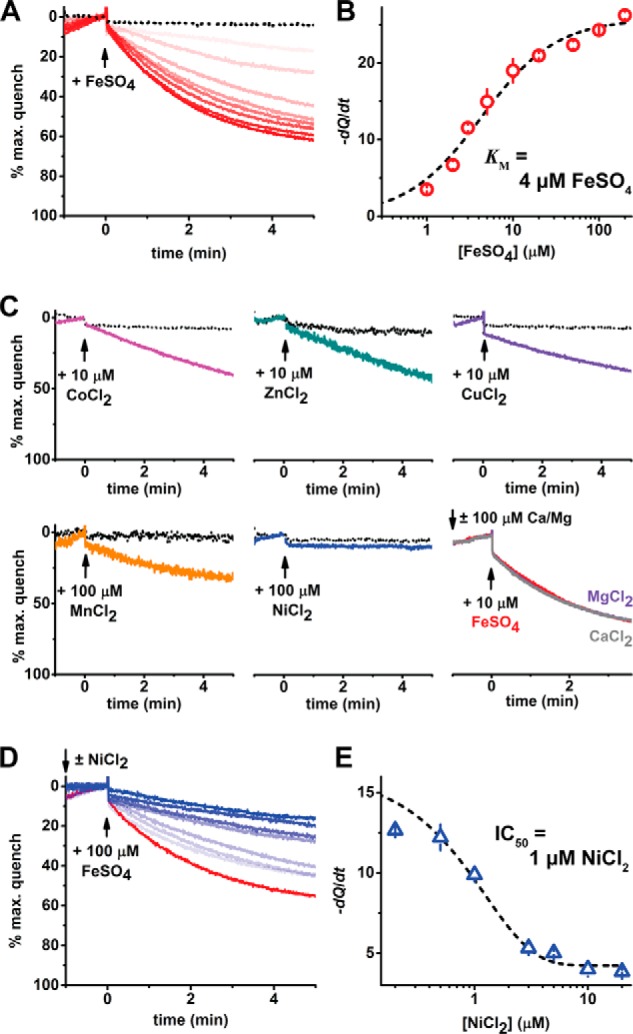Figure 3.

Proteoliposome-reconstituted TMfrn1 transports iron and other transition metals. A, representative PGSK quenching curves upon addition of iron to (proteo)liposomes. Red traces are escalating concentrations of iron (1–200 μm) applied to TMfrn1-containing liposomes. Black dotted traces show protein-free liposomes exposed to 100 μm iron. Traces are plotted as a percentage of maximal PGSK quenching after addition of the ionophore pyrithione (2 μm). B, concentration dependence of TMfrn1 iron transport. Depicted in red are initial quenching rates after iron addition, and points were fit to the Michaelis-Menten equation (black line). C, TMfrn1 transports cobalt, zinc, copper, and manganese but not nickel. Colored traces depict TMfrn1 liposomes; dotted black traces are protein-free liposomes. D, nickel blocks TMfrn1 iron transport. Shown are representative traces of 0–20 μm nickel applied prior to 100 μm iron; the red trace shows 0 nickel with blue traces showing escalating [nickel]. E, concentration dependence of nickel on TMfrn1 iron transport. Depicted in blue are initial quenching rates after iron addition; the black line shows a sigmoidal fit of initial quenching rates. In B and E, error bars depict S.D. of triplicates.
